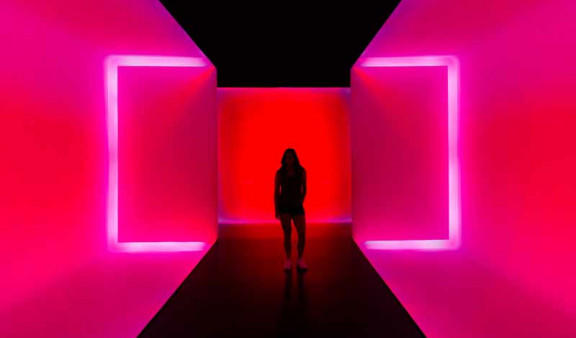
CES 2020: the human being's experience at the centre of technological innovation
This 53rd annual Consumer Electronics Show (CES) gave pride of place to experience, by refocusing debate about technological innovation on human beings and how they can be better connected by monitoring their health, their homes, their environment (urban mobility and travel) and the challenges facing the planet. Check out the four main areas of innovation for 2020 that we observed at the show below.
Health - a primary concern
A plethora of solutions for skin analysis (Miroir Poséidon from CareOS), monitoring heart rate (Binah.ai), stress (Sompo Himawari) and sleep (ScanWatch by Withings) are now making a breakthrough. A field of possibilities is opening up before us and is constantly expanding thanks to advances in artificial intelligence (IA) coupled with the myriad sensors and huge amount of data which we already have. It comes as no surprise to see a number of major international players taking an interest in the subject: Amazon has created a "Health" division, Walmart has invested in healthcare clinics and Google acquired Fitbit in late 2019. Once again, individuals face the issue of keeping control of their data. We must remain vigilant!
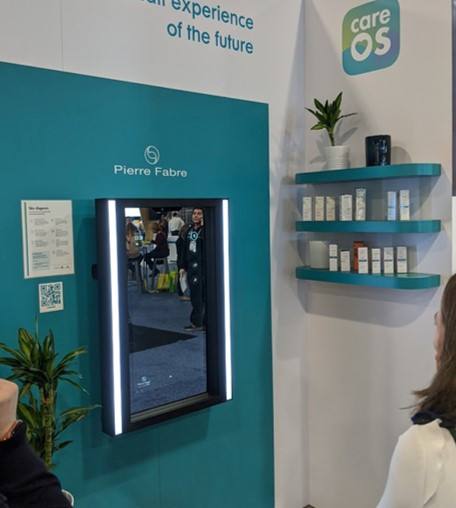
Connecting your home to your ecosystem, what you need to know
Centralised platforms for managing and controlling smart homes were the stars of CES 2020, and everyone has their own version; the challenge being how well they can integrate objects in the home and partners from the Smart Home sector. We discovered Panasonic's AI-boosted Homex platform for customising the smart home experience, and Enki from Leroy Merlin (400+ products and 25 partners), which allows users to set custom scenarios with connected household objects. Also worthy of a mention are Legrand, with its Drivia smart electrical panel, and Netatmo's smart door lock and keys which don't need to be connected to the Cloud (because the information is stored in the key).
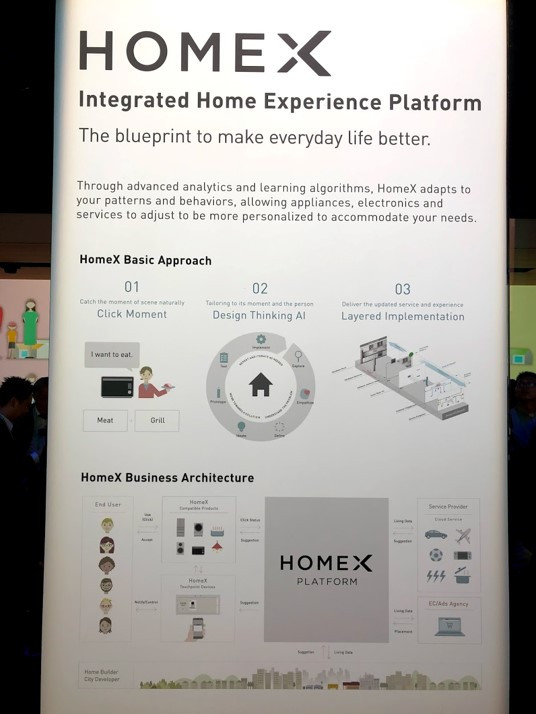
Seamless urban mobility - the great promise
Now more connected than ever, urban mobility is guided by the idea of having an overview to ensure a seamless experience. The self-driving car could be a game-changer for urban mobility; car and equipment manufacturers are all putting forward their Smart City connected autonomous vehicles, as well as vertical take-off and landing aircraft (Bell's Air Taxi and Hyundai's S-HUB). This is all underpinned by computer vision technology based on Lidar (Light - or Laser Imaging - Detection And Ranging; 3D sensors) which is more powerful but still not stylish... the sensors have still not been successfully integrated into vehicles. And taking this a step further, we have Toyota with its plans to build a test city, the Woven City, near Mount Fuji for testing the technologies and practices of tomorrow.
In the field of travel, Delta and its partner Msiapplied Science really impressed us with their Parallel Reality technology. This technology has the remarkable ability to display, on a single display board, a personal message for several people at the same time (currently up to 100 people). For example, to show their travel information and guide them around the airport (this concept is being piloted this year in Detroit). We pre-tested it and it's truly amazing! Parallel Reality is undoubtedly the major innovation of this year's CES show.
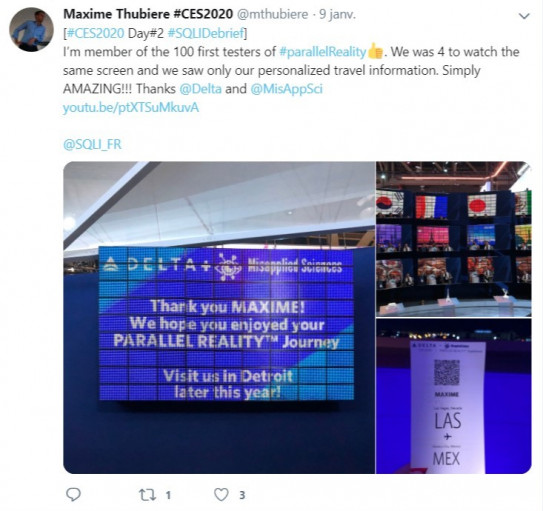
Consume smarter, in the great tradition of sustainable development
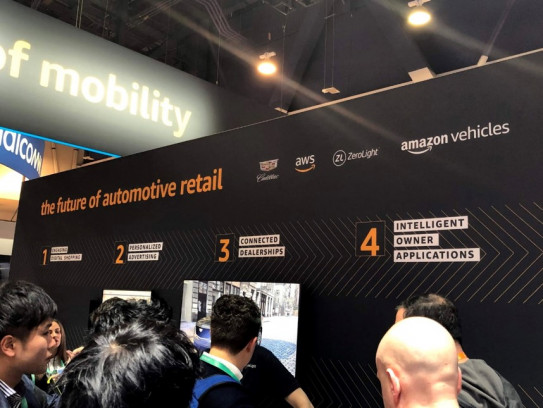
In spite of differences of opinion, progress is being made towards sustainable development with a rationale to simplify and streamline the shopping experience. Amazon and its automotive market concept is pretty impressive: in collaboration with its partner ZeroLight, the giant is offering a seamless experience which starts with the configuration of the car in augmented reality. The buyer simply has to confirm their order in 3 clicks; the order is instantly added to the dealers' Salesforce CRM platform and then delivered to the buyer's home along with a personal brochure. For its part, LG is offering a mobile-based virtual fitting room solution which uses a top-to-toe scan to create an avatar of the customer. So shoppers no longer need to go to shops to try on clothes.
In the realm of sustainable food, the start-up Impossible Foods is back this year with its burger 2.0, a burger that tastes like meat but which doesn't actually contain any (and it's not bad…), and myFood exhibited a complete smart greenhouse solution for growing plants and vegetables in cities. To help us avoid wasting drinking water, Hydraloop is offering a patented system for recycling 85% of household water (for the shower, toilet or even the washing machine). And finally, 20tree.ai has increased our understanding of the planet by applying AI to satellite imagery. Therefore it is now possible to observe the quantity and quality of natural resources, biomass, carbon sequestration and threats such as forest fires, and deforestation. This data is then made available to financial institutions, businesses and governments via a platform and an API, (Application Programming Interface) so they can have information about every square metre of land on earth in real time.
To sum up, this latest edition of the CES show was full of pleasant surprises, particularly Delta and Parallel Reality. We look forward to seeing how it will be put into practice and what will be learned from it. We were a bit disappointed by the automotive section, which did not have many new developments to offer, but which is nevertheless still trying to link up with the Smart City.
Maxime Thubiere, Innovation Consultant and Arnaud Vatin, Technical Project Manager